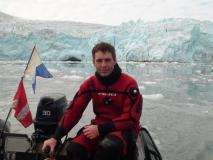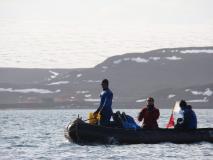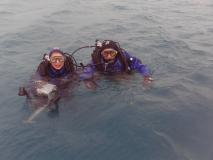New ice-free areas in Potter Cove, an opportunity for ascidian´s populations?
A rapid retreatment of Fourcade glacier could be associated with a significant increase of air temperature over the past 15 years in Potter Cove.
This rapid decline of glacier, more than 20.5 km2 in eight years (2000-2008), not only affects coastal ecosystems, but also has left free an important area including a couple of new islands in the NE coast of the cove. In 2009, the bigger island was sampled using phototransects that were taken up to 30 m depth. Surprisingly, a different and unexpected situation in comparison to the rest of the cove was observed. A really dense macrofaunal community dominated by ascidians was found, the highest registered, even compared with the inner cove communities of 15 years ago. The high abundance of ascidians observed suggests that these organisms may be opportunistic species. Thus, this situation poses a question about ascidian´s ability for colonization and establishment in future new areas in Antarctica. In order to help solving this issue, during the Antarctic Expedition 2010 several artificial panels were installed and some natural substrata were cleaned on the wall of the recent discovered island. These experiments would be useful to generate high-resolution data on the seasonality, diversity and abundance of early recruitment in hard-substratum. We are currently analizing our data and discussing all results of these campaigns for a better understanding of the patterns and biological processes that determine colonization, establishment, structure and the dinamics of Antarctic benthic ecosystems.
 |
 |
 |

